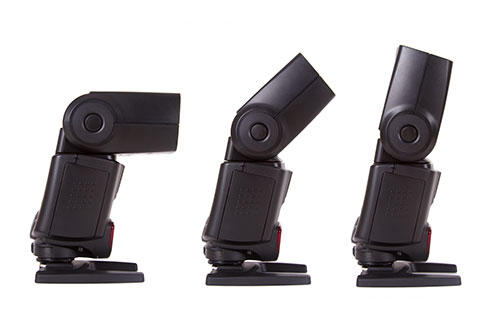As an avid amateur photographer of over 10 years, I have some pretty good understanding of how to take good photos. I’ve done some photography for hotels previously too, on a low budget. So I thought I would like to share my top 7 tips:
1. Hire a photographer
You might want to do everything yourself to save a few bucks, and you might be thinking that it can’t be that hard to take a couple of shots of the rooms. But you would be doing a mistake. The rest of my tips are for people that are somewhat interested in photography, have a basic understanding of how to use a camera, and most importantly – for people that actually either have a decent camera or are willing to go out and buy a new one for this purpose. For everybody else, I seriously recommend you to hire a professional photographer. Taking the pictures, editing them, etc., will take much more time than you think. And the end result won’t be as good, since the professional photographer will have much better gear and will have done this a thousand times in the past. Bite the bullet, save some time and effort, and don’t try to do it yourself.
2. Have a decent camera with an external flash
You can’t take the photos with your phone. Seriously. I’ve seen this so many times, and it can only be done if the lighting conditions are perfect, which they never are. You need to use an external flash, at LEAST one. More on that later.
If you are going to buy a new camera, make sure it has a shoe for an external flash. Never use the built in flash for this kind of photography, the pictures will just look harsh from the direct lighting.

3. Wide-angle lens
If you buy a new camera, chances are you will get a lens with it. This is called a kit lens. It is probably not a suitable lens for taking pictures indoors. It might however be good for taking detail shots of things you want to highlight and outdoor pictures.
The lens is incredibly important for getting good pictures. You want one that is as “wide” as possible without being something called a fish-eye lens. The fish-eye distorts the picture to get as much as possible into the frame, which will look very odd in this situation. However, a regular wide angle lens will make the room look nice and large. A really wide one will maybe trick the possible guest a little bit, by pretending that the room is larger than it actually is, but that’s fine. The wideness of a lens is measured in millimeters (mm). Less is better, aim for something at least below 25mm.
4. Think about lighting
Get an external flash that has a head which can be tilted and swiveled. Look up towards the ceiling in the room you are going to photograph. Is it white, or whiteish at least? Great, point the flash just straight up, or even possible slightly behind you. Is the ceiling in some other color? Uh-oh, we have a small problem. Experiment by shooting the flash towards the walls if they are white, and if you can trigger the external flash with your internal one, unscrew the flash from the camera and put it behind the curtains or in the corner of a room pointed towards the room.
The main point is to try to avoid direct and harsh lightning. And you want white light, otherwise you will have a nightmare in the editing stage trying to adjust for the weird colors that bounced off the ceiling or walls.
A final small tip, turn on all the lights in the room even when it is daylight. It makes the final result look a little bit warmer and cozier. And don’t take any pictures when it’s pitch black outside. You will get the best results in the early afternoon, if the sun won’t be shining directly into the camera through the window.

If you want to read up more on the subject of external flashes, here is a good link.
5. Clean up the room, make sure everything is in order
Of course the room will be clean and tidy before you are going to photograph it, but it’s all in the details. When you are looking through the lens, what items will be in the picture? Maybe you have a small lamp in the corner of your eye that won’t entirely fit in the image.. might be best to just nudge it away a little bit. Is there a small smudge on a mirror? Clean it up first.
The devil is in the details, and small things like this will be in the photograph for a long time, and I promise that a lot of people will notice. So make sure your feet are not showing, that you can’t see yourself in the reflection of things, it takes a couple of minutes of extra thought for each frame but it’s well worth it.
6. Learn at least a little bit of photo editing
People usually think photo editing means airbrushing perfect skin onto models and making people thinner than they actually are. While this does happen and is part of the photo editing term, it is not everything there is to it.
Digital cameras try to save as much information of the scene as possible, which means the contrast will be really low. They try to correct the colors to make it look the same as it did in your eye at that moment, but there is no perfect way to do this automatically yet.
That means that you will need to spend a little bit of time in some photo editing software for each image. Make sure blacks are black, whites are white, and that the image doesn’t have a blue tint, since that will make the place feel unwelcoming and cold. A little bit of a yellow tint is better.
Also, as a last step, add some color saturation and vibrance, and then scale down the image to something suitable for the web, like 1024px wide. And as a last step, add some sharpness. This will make your image look sharp, fresh and warm.
How to actually do all these things depends on the software, and is a much longer topic than will fit into this blog post.
7. Not just the rooms
Try to think of the pictures as a set of pictures, where they work together as a whole. Don't take 10 pictures of the same thing, and then skip basic things like a photo of the bathroom and the entrance to the building. People don’t want to look at too many pictures, so you need to impress them quickly.
Keep in mind also that just overviews of the room might not give the feeling that you want to send across, so a couple of detail shots of the interior and exterior might be a winning move. And don’t be afraid to give it all a human touch, maybe you should be in a picture too?
Alright, that's it for this time!
/Henri, CTO



